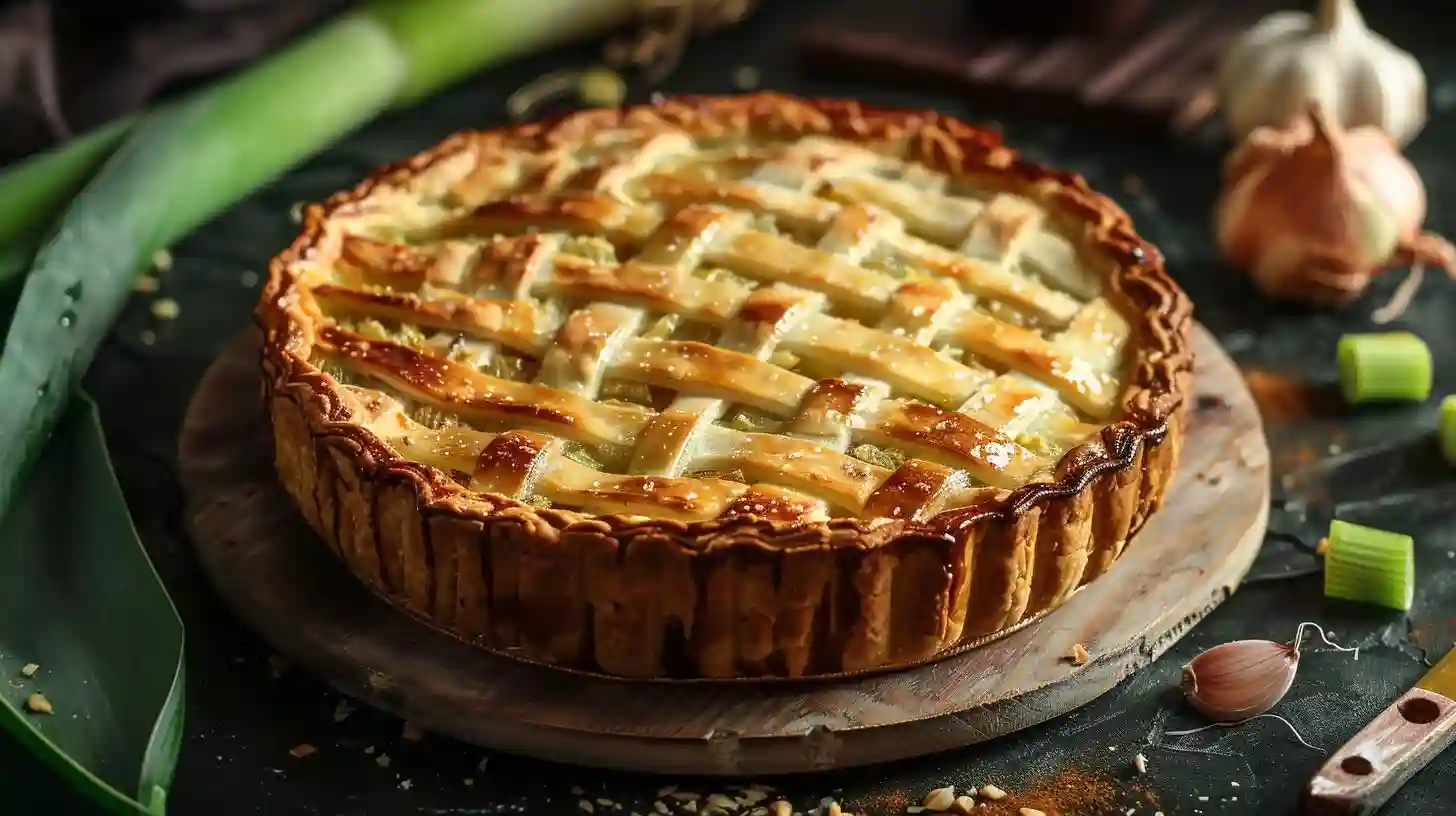
Луковый пирог, или по-другому луковый пирог, представляет собой одно из самых аппетитных и ароматных блюд в гастрономической традиции многих стран. Он сочетает в себе необыкновенный вкус, насыщенный аромат и простоту приготовления. Этот пирог может стать как основным блюдом на обеденном столе, так и вкусным дополнением к вечернему чаепитию. Разнообразие рецептов позволяет каждому повару адаптировать его под свои предпочтения и вкусовые привычки.
Лук является основным ингредиентом этого блюда. Его наличие придаёт пирогу особую сладость и великолепный аромат. Пирог с луком особенно популярен в западной кухне. В зависимости от региона его могут готовить на основе теста, блинов или даже в виде запеканки. Луковый пирог на основе дрожжевого теста — это классический вариант, который прекрасно подойдет для больших сборищ. Для приготовления теста обычно используют муку, молоко, яйца, сахар и соль. Тесто для пирога должно быть мягким, эластичным и хорошо подниматься в процессе выпечки.
При приготовлении начинки для лукового пирога также можно проявить креативность. К традиционному рецепту часто добавляют яйца, сыр, картошку и даже мясо. Сыр особенно хорошо гармонирует с луком, придавая начинке кремовую текстуру и дополнительный вкус. Возможно использование различных видов сыров, включая твердые или мягкие с разнообразными ароматами. В некоторых рецептах также используются специи, такие как орегано или тимьян. Они дарят пирогу ноты пряности и делают его вкус более насыщенным.
Для нежности и мягкости пирога необходимо уделить внимательное внимание процессу обжаривания лука. Наиболее вкусным считается лук, обжаренный до золотистой корочки, в масле. Этот процесс не только делает лук сладким и мягким, но также наполняет кухню аппетитным ароматом. Лук следует обжаривать на среднем огне, чтобы он не подгорел и не стал горьким. Процесс может занять некоторое время, однако терпение в этом случае точно окупится.
Стоит отметить, что луковый пирог можно готовить как во времени, так и в свежем виде. Чтобы упростить процесс, можно использовать готовое слоеное тесто, которое сделает месяцы подготовки намного легче. Это идеальное решение для тех, кто всегда в поисках быстрого и вкусного ужина. Слоеное тесто обеспечивает желаемую хрустящую корочку и прекрасно сохраняет вкус начинки внутри.
На вопрос о том, когда лучше всего готовить луковый пирог, ответ однозначный — когда в дом приходит вдохновение и желание порадовать себя и близких чем-то особенным. Он подойдёт как для буднего вечера, так и для праздничного застолья, когда тепло общения и радость общения делает блюда ещё более вкусными. Пирог можно подавать горячим, теплым или даже холодным. Он прекрасно подходит к салатам или может быть самостоятельным блюдом. Луковый пирог также удобно брать с собой на пикник или в поездку.
Если говорить о региональных вариациях, то луковый пирог в частности имеет несколько уникальных рецептов в разных странах. В Германии, например, готовят луковую запеканку под названием "Zwiebelkuchen", где наряду с луком присутствуют также бекон и сметана. Эта запеканка обладает насыщенным вкусом и зачастую подается с молодым вином. Во Франции популярностью пользуется луковый тарт Татен, где свежеиспеченное тесто обжаривается на сковороде с луковой начинкой, а затем запекается в духовке.
Однако вне зависимости от вариации, уходящих корнями в традиции конкретной страны, луковый пирог остаётся одним из символов домашнего уюта и теплоты. Он ассоциируется с домашними посиделками, встречами с друзьями и родными. Приготовление такого пирога — это отличный способ украсить день и собрать вместе близких. Столетиями луковый пирог был завоевателем сердец, находя своё место на праздничных столах разных народов. И даже если не особенно увлекаетесь кулинарией, этот пирог вполне можно осилить.
Приятный момент заключается в том, что луковый пирог — это не только вкусное, но и довольно питательное блюдо. Он содержит клетчатку, витамины и минералы, необходимые организму. Тем не менее, как и любое другое блюдо, он требует умеренности в потреблении, особенно если в начинке присутствуют сыр и масло. Уважаемые гурманы могут экспериментировать с ингредиентами, создавая уникальные вариации пирога, которые подойдут даже самым взыскательным любителям гастрономии.
Приготовление лукового пирога не заканчивается только этапом выпекания. Существует немало секретов, которые могут сделать его ещё более восхитительным. К примеру, при посыпке пирога натертым сыром перед запеканием вы получите дополнительный вкус и оттенок хрустящей корочки. Идеально, если сыр хорошо плавится, как моцарелла или чеддер, который дополнит блюдо своей тягучестью и сливочным вкусом.
Луковый пирог также прекрасно сочетается с различными соусами. Чаще всего его подают со сметанным, йогуртовым или даже томатным соусом. Каждый из таких соусов добавляет свои нотки в общее впечатление от блюда. Можно приготовить острый соус с добавлением перца и специй, который прекрасно будет контрастировать с нежностью пирога.
Другое интересное направление — это использование лукового пирога как основы для других закусок. Например, можно нарезать его порционно и подавать в качестве закуски к бокалу вина. В таком виде он приятно дополняет вечернюю атмосферу разговоров и общения, создавая уют и тепло в компании. Способы подачи тоже варьируются: можно украсить зеленью, добавить свежие овощи или даже фрукты, чтобы создать неожиданный контраст вкусов.
Для настоящих любителей кулинарии луковый пирог становится настоящей палитрой для создания уникальных шедевров. Каждое приготовление может превратиться в маленькое искусство. Научившись готовить такой пирог однажды, с течением времени можно развивать его рецептуру, добавляя новые ингредиенты и компоненты, которые будут делать его ещё более интересным.
Луковый пирог — это не просто еда. Это целая культура! В каждом куске заключена история, которая продолжает жить в сердцах людей, которые его готовят и едят. Эта простая, но очень душевная еда способна объединять нас всех, становясь неиссякаемым источником вдохновения для кулинаров и гурманов. Каждый раз, когда мы улыбаемся, наслаждаясь каждый кусочек, мы понимаем, насколько важна такая простая радость, как хорошо приготовленный пирог с луком.